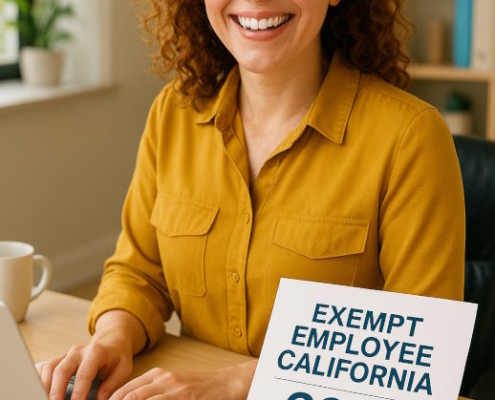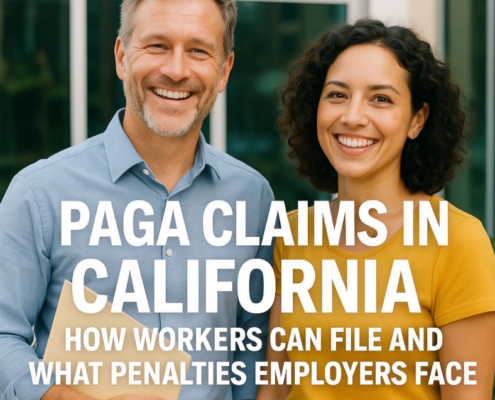What is paternity leave?
Paternity leave is an employee benefit where a new father is given a period of several weeks or months to stay home from work to bond with a newborn child.
By Brad Nakase, Attorney
Email | Call (800) 484-4610
Get Smarter. Search FAQs.
What is paternity leave?
In California, paternity leave is governed by three primary laws: the Family and Medical Leave Act (FMLA), the California Family Rights Act (CFRA), and the New Parent Leave Act (NPLA). Also, the Paid Family Leave (PFL) provides benefit payments to parents who need to take time off work to bond with a newborn child. Each of these paternal leave laws plays a crucial role in providing eligible employees with the necessary time off to bond with their newborn or newly adopted children while ensuring job protection during their leave period. Companies that violate paternal leave law should contact an employment dispute attorney for legal advice.
Let’s dig into the specifics paternity leave law and the benefits they offer to eligible individuals:
Family and Medical Leave Act (FMLA):
The FMLA is a federal law that applies to eligible employees across the United States, including those in California. Under the FMLA, eligible employees are entitled to take up to 12 weeks of unpaid leave during a 12-month period for specific qualifying reasons, including the birth or adoption of a child. Paternal leave can be taken consecutively or intermittently, allowing for flexibility in managing family responsibilities.
Eligibility for FMLA Paternity Leave in California:
- The employee must work for a covered employer, which includes private companies with 50 or more employees within a 75-mile radius and public agencies.
- The employee must have worked for the covered employer for at least 12 months, which need not be consecutive, prior to the start of the FMLA leave.
- The employee must have worked at least 1,250 hours during the 12-month period immediately preceding the start of the FMLA leave.
- The employee must work at a location where the employer has at least 50 employees within a 75-mile radius.
California Family Rights Act (CFRA):
The CFRA is a state law in California that provides paternity leave benefits to employees who are eligible for FMLA leave. It covers many of the same qualifying reasons as the FMLA, including bonding with a newborn or newly adopted child, as well as caring for a family member with a serious health condition. The key difference between the CFRA and FMLA is that the CFRA extends the coverage to employers with as few as five employees.
Eligibility for CFRA Paternity Leave in California:
- The employee must work for a covered employer with five or more employees.
- The employee must have worked for the covered employer for at least 12 months, which need not be consecutive, prior to the start of the CFRA leave.
- The employee must have worked at least 1,250 hours during the 12-month period immediately preceding the start of the CFRA leave.
New Parent Leave Act (NPLA):
The New Parent Leave Act is a California-specific law that extends the right to paternity leave to employees working for smaller employers not covered by FMLA and CFRA. The NPLA allows eligible employees to take up to 12 weeks of unpaid leave to bond with a new child within one year of the child’s birth, adoption, or foster care placement.
Eligibility for New Parent Leave Act in California:
- The employee must work for a covered employer with 20 to 49 employees.
- The employee must have worked for the covered employer for at least 12 months, and at least 1,250 hours during the 12-month period immediately preceding the start of the NPLA leave.
It is important to note that while FMLA, CFRA, and NPLA provide unpaid paternity leave, employees may have the option to use accrued vacation days, sick leave, or other paid time off during their paternity leave to receive compensation during their absence.
To sum up, these three primary paternity leave laws in California – FMLA, CFRA, and the New Parent Leave Act – are instrumental in supporting working parents, ensuring they have the necessary time to bond with their children without the fear of job loss. By catering to employees in both large and small businesses, California sets a strong precedent for other states, championing the importance of work-life balance and family well-being.
Paternal Leave Eligibility Requirement
To be eligible for PFL paternity leave benefits in California, fathers must meet the following requirements:
- The father must have earned a minimum amount in wages during a specified base period, which is generally determined by their recent employment history.
- The father must have paid into the SDI program through payroll deductions, either as part of their current employment or a recent job.
It is worth noting that more and more companies in California are voluntarily offering paid paternity leave as part of their employee benefits package. As employers recognize the value of supporting work-life balance and family bonding, offering paid paternity leave has become a valuable tool for attracting and retaining talent while fostering a positive work culture.
In addition, for employees whose employers do not offer paid paternity leave or who may not meet the eligibility criteria for the PFL program, they may still be eligible to receive SDI benefits if they need time off to bond with their child. SDI benefits are accessible to individuals who meet the eligibility requirements, regardless of whether their employer provides paid leave.
In conclusion, while there is no mandatory paid paternity leave in California, fathers in the state can access paid paternity leave through the Paid Family Leave program, which provides partial wage replacement during their time off to bond with their child. Moreover, the growing trend of companies offering paid paternity leave demonstrates a positive shift in acknowledging the significance of supporting working parents. Even for those whose employers do not offer this benefit, the SDI program remains an option for wage replacement during their paternity leave. The continued emphasis on work-life balance and family support in California exemplifies the state’s commitment to creating a more family-friendly and inclusive work environment.
How long do fathers get for paternity leave in California
Paternity leave in California under the California Family Rights Act (CFRA) allows eligible employees to take up to 12 weeks of unpaid leave within a 12-month period. This leave can be taken for specific qualifying reasons, including bonding with a newborn child or newly adopted child, or to care for a family member with a serious health condition.
To be eligible for paternity leave under the CFRA in California, an employee must meet the following qualifications:
- Employment Duration: The employee must have worked for the covered employer for at least 12 months. The 12 months of employment need not be consecutive, but the total time spent with the employer should be at least 12 months.
- Hours Worked: The employee must have worked at least 1,250 hours during the 12-month period immediately preceding the start of the CFRA leave. These hours can include regular work hours, overtime, and some types of paid time off.
- Covered Employer: The CFRA applies to employers with five or more employees. The employer can be a private company or a public agency.
- Qualified Reason: The employee must take the paternity leave for a qualifying reason, such as bonding with a new child within one year of the child’s birth or placement through adoption or foster care.
Under the CFRA, the 12 weeks of paternity leave are unpaid, but eligible employees can still access paid benefits through the Paid Family Leave (PFL) program, a component of the State Disability Insurance (SDI) program. Through the PFL program, eligible employees can receive partial wage replacement during their paternity leave to bond with their child.
Do you need to provide notice before taking paternity leave?
Providing reasonable notice before taking paternity leave is a responsible and courteous approach that allows employers to plan for the temporary absence of an employee and ensures a smoother transition during the leave period. Although the specific notice requirements may vary based on company policies and applicable laws, the following are some general guidelines on how to provide reasonable notice for paternity leave:
- Timing of Notice: Ideally, inform your employer of your intention to take paternity leave as soon as possible after you become aware of the need for the leave. This early notice will give your employer adequate time to make necessary arrangements for your absence.
- Company Policy: Review your company’s employee handbook or policy manual to understand the specific notice requirements for paternity leave. Some companies may have a designated time frame for providing notice, such as 30 days in advance of the leave start date.
- Written Notice: Submit your notice of paternity leave in writing to ensure clarity and avoid any miscommunication. An email or formal letter addressed to your supervisor or the human resources department is typically sufficient.
- Duration of Leave: Clearly state the duration of the paternity leave you plan to take. Mention the start date and the expected date of return to work. If you are uncertain about the exact duration, provide an estimated time frame and keep your employer informed of any changes.
- Reason for Leave: While it is not always necessary to disclose the specific reason for your paternity leave, you can mention that it is for bonding with your new child following birth, adoption, or foster care placement.
- Intention to Use Paid Leave: If you intend to use any accrued paid time off (ex: vacation days, sick leave) during your paternity leave, specify this in your notice.
- Contact Information: Ensure that your employer knows how to contact you during your paternity leave in case of any urgent matters or emergencies that may require your attention.
- Legal Requirements: Familiarize yourself with any legal requirements regarding notice for paternity leave in your region. In some cases, specific laws may mandate a certain amount of notice before taking leave.
- Be Professional and Polite: Keep the tone of your notice professional and respectful. Express gratitude for the understanding and support of your employer during this time.
Open communication with your employer is crucial when requesting paternity leave. Providing reasonable notice and following company procedures will help create a positive and cooperative atmosphere during your absence and will likely be appreciated by your employer.
Have a quick question? We answered nearly 2000 FAQs.
See all blogs: Business | Corporate | Employment
Most recent blogs:
































